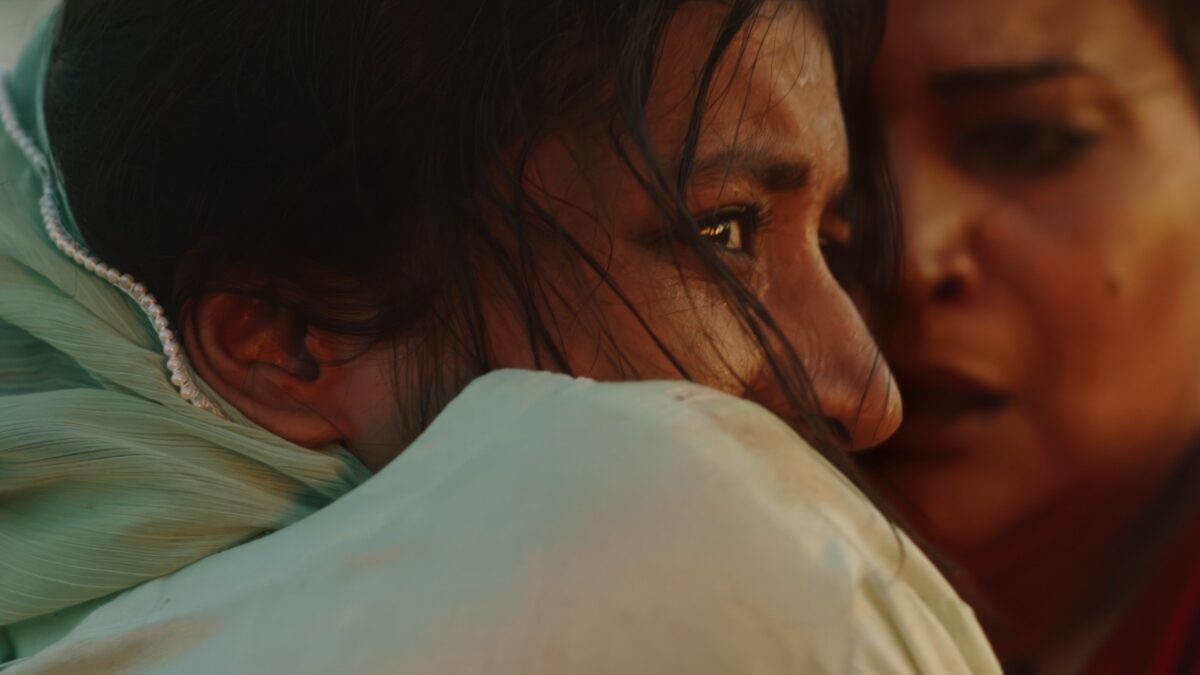
Sometimes you have to try something new to get the best edit possible.
This post was written by Craig Scorgie.
In Flames is a new horror film premiering this month at Cannes Directors’ Fortnight. The movie takes place in Karachi, Pakistan, and follows a mother and daughter who are fighting malevolent forces, both real and imagined, that emerge following the death of the family’s patriarch.
My name is Craig Scorgie, and I co-edited this film with its director Zarrar Kahn. I’m here to share my experience working on In Flames, the unique process that brought this story to life in the cutting room, and a sense of what it can be like co-editing with a director.
I was first introduced to this project when I met Zarrar Kahn during my time at the Canadian Film Centre (CFC). The CFC is sort of Canada’s equivalent of the American Film Institute (AFI). It’s a residency in Toronto where filmmakers meet, collaborate, and develop their voices with industry mentorship and production resources.
I was part of the editors’ program at the center, and Zarrar was in the directors’ program. We quickly discovered our mutual admiration for each other’s work, and Zarrar mentioned he was hoping to find an editor for his upcoming feature film, In Flames. Zarrar had edited all of his short films before this but saw value in bringing an editor on board for his first feature film. He was curious about how an editor would fit into his process, being a director who also likes to edit.
I may be stating the obvious, but I believe that there is no one-size-fits-all process for editing a film.
There is conventional wisdom and best practices, but at the end of the day, each director and each story has its own needs.
In the early days of a new project, I always put a lot of my energy into assessing how the director is showing up to collaborate, and what the challenges of the film are – and adjust my approach to the editing process accordingly. This instinct comes from my background in improv comedy, where everything in a scene stems from how your scene partner shows up on stage. It’s not about what I think works best, it’s about what works best for us and what we are creating.
Because Zarrar and I had the opportunity to work together at the CFC before working on In Flames, we spent a lot of time discussing the editing process.

Zarrar is a director that shoots with extreme intention, and in production, he knows exactly what he wants his in and out frames to be, and what he wants the shot order of every scene to be.
Out of respect for these intentions, we agreed that for our process – Zarrar should edit the first pass of his film so that he can communicate his ideas in a way that he is most comfortable with.
After Zarrar has done his first pass, he is open to any and all ideas that I might have and wants to see them all at once. So for my pass on the film, I have complete freedom to do any experiments I want with the footage. This part is so much fun because I can really go wild with it – removing/reordering/splitting scenes, changing dialogue, experimenting with structure, whatever my creative instincts tell me to do. Then once my version is complete, we start working together on a “third version” – one that combines the best of both our ideas. This is the process that we developed at the CFC program and replicated for our work together on In Flames.
After arriving at our “third version” of In Flames, we scheduled a few rounds of test screenings and feedback to work towards a fine cut. I am a firm believer in test screenings. It’s always a fascinating opportunity in the edit to discover all of your blind spots, and they exist at some point in every film!
An interesting blind spot that we discovered in early screenings for In Flames was how different audiences were reading the tone of our film than how we intended it to be. From a script stage, our film was always intended to be classic horror with some elements of drama. We discovered from test screenings that audiences thought our film skewed much more toward drama than we intended.
Somewhere along the line of making this film – whether it was in the performances, how it was shot, or how these moments played on screen – something in the tone of the film had shifted from how it read in the script. Being aware of this audience reaction was crucial for us because we were able to go back to the edit with it in mind, this time making much more deliberate choices on tone and consistency – When are we horror? When are we drama? Can we ride the line between the two?

We completely changed some moments, including a complete reimagining of the film’s ending. I’m definitely very thankful for the test screenings we had, and the folks who offered us feedback along the way. Without it, we wouldn’t have arrived at the truly unique atmosphere that we managed to build with this film.
After this process, I couldn’t be more pleased with the final cut we put together of In Flames. The way it brings such complex themes of grief, misogyny, love, and mental illness into the psychological horror genre I feel is innovative and exciting. To me, this film is also a shining example that there are no blueprints for how you should make your art.
The way we edited this film may have been unconventional – but it was right for us, and that’s all that matters!














